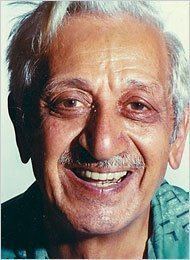Wade–Giles Yue-han Te-fan-k'e Traditional Chinese 約翰·德范克 Name John DeFrancis | Simplified Chinese 约翰·德范克 Role Linguist Hanyu Pinyin | |
 | ||
Born August 31, 1911Bridgeport, Connecticut, United States ( 1911-08-31 ) Institutions University of HawaiiSeton Hall University Died January 2, 2009, Honolulu, Hawaii, United States Books The Chinese Languag, Beginning Chinese reader, Visible Speech: The Diver, Intermediate Chinese, Practice Sheets for Beginnin | ||
John defrancis remarks
John DeFrancis (August 31, 1911 – January 2, 2009) was an American linguist, sinologist, author of Chinese language textbooks, lexicographer of Chinese dictionaries, and Professor Emeritus of Chinese Studies at the University of Hawaiʻi at Mānoa.
Contents
- John defrancis remarks
- Review beginning chinese reader part 1 john defrancis
- Biography
- Works
- The DeFrancis series
- Supplementary series
- Books and monographs
- Dictionaries
- Reviews
- References
Review beginning chinese reader part 1 john defrancis
Biography
John DeFrancis was born in Bridgeport, Connecticut in a family of modest Italian immigrant origins. His father, a laborer (who changed his name from DeFrancesco), died when DeFrancis was a young child. His mother was illiterate.
After graduating from Yale University in 1933 with a B.A. in economics, DeFrancis sailed to China with the intent of studying Chinese and working in business. In 1935, he accompanied H. Desmond Martin, a Canadian military historian, on a several-thousand-mile trip retracing the route of Genghis Khan through Mongolia and northwestern China. His book In the Footsteps of Genghis Khan (University of Hawai'i Press, 1993) describes this journey riding camels across the Gobi Desert, visiting the ruins of Khara-Khoto and rafting down the Yellow River. Along the way, he met the Chinese Muslim Ma Clique warlords Ma Buqing and Ma Bukang. DeFrancis returned to the United States in 1936 and did not visit China again until 1982.
DeFrancis began graduate studies in Chinese, first at Yale under George A. Kennedy and then at Columbia University due to Columbia's larger graduate program in Sinology. He received an M.A. from Columbia in 1941, then a Ph.D. in 1948 with a dissertation entitled "Nationalism and Language Reform in China", which was published by Princeton University Press in 1950. He began his academic career teaching Chinese at Johns Hopkins University during the period of McCarthyism and the Red Scare, but was blacklisted for defending his colleague Owen Lattimore from unsubstantiated allegations of being a "Russian spy." DeFrancis eventually returned to teaching, notably at Seton Hall University from 1947 to 1954, and the University of Hawai'i at Mānoa from 1966 to 1976. In the 1960s, at the request of John B. Tsu, he wrote a 12-volume series of Mandarin Chinese textbooks and readers published by Yale University Press (popularly known as the "DeFrancis series"), which were widely used in Chinese as a foreign language classes for decades; DeFrancis was one of the first educators outside China to use pinyin as an educational aid, and his textbooks are said to have had a "tremendous impact" on Chinese teaching in the West. He served as Associate Editor of the Journal of the American Oriental Society from 1950 to 1955 and the Journal of the Chinese Language Teachers Association from 1966 to 1978.
DeFrancis retired from teaching in 1976, but remained an important figure in Chinese language pedagogy, Asian sociolinguistics, and language policy, as well as a prolific author. One of his most well-known books, The Chinese Language: Fact and Fantasy (University of Hawai'i Press, 1984) attempts to debunk a number of what DeFrancis considered "widespread myths" about the language—including, for instance, what he referred to as "The Ideographic Myth." Another influential work of his was Visible Speech: The Diverse Oneness of Writing Systems (Honolulu: University of Hawai'i Press, 1989), which addressed more myths about the Chinese writing system, and has been called his "magnum opus" by colleague Victor H. Mair. DeFrancis spent his final years diligently working as Editor in Chief of the "ABC (Alphabetically Based Computerized) series" of Chinese dictionaries, which feature innovative collation by the pinyin romanization system.
DeFrancis died on 2 January 2009, in Honolulu, Hawaiʻi, at the age of 97.
Works
John DeFrancis was the author and editor of numerous publications. See Mair 1991 (pages vii-ix) for a partial list.
The "DeFrancis series"
Textbooks (Yale Language Series, Yale University Press):
Supplementary series
Accompanying Supplementary Readers for the Intermediate Chinese Reader, (Yale University Press, 1976):
Books and monographs
Dictionaries
Editor of bilingual Chinese dictionaries (University of Hawai'i Press), which are used as databases for software such as Wenlin:
Reviews
Duncanson, Dennis (1985). "The Chinese Language: Fact and Fantasy by John DeFrancis". The Journal of the Royal Asiatic Society of Great Britain and Ireland. Cambridge University Press (2): 245. JSTOR 25211897.
Chen, Matthew Y. (Sep 1986). "The Chinese Language: Fact and Fantasy by John DeFrancis". Language. Linguistic Society of America. 62 (3): 690–694. JSTOR 415490. doi:10.2307/415490.
Wadley, Stephen (Spring 1986). "The Chinese Language. Fact and Fantasy. by John DeFrancis". Pacific Affairs. Pacific Affairs, University of British Columbia. 59 (1): 114–115. JSTOR 2759. doi:10.2307/2759019.
King, Brian (Jun 1991). "Visible Speech: The Diverse Oneness of Writing Systems by John DeFrancis". Language. Linguistic Society of America. 67 (2): 377–379. JSTOR 415119. doi:10.2307/415119.
Chung, Karen Steffen (Sep 1998). "ABC Chinese-English (Alphabetically Based Computerized) Dictionary by John DeFrancis". Language. Linguistic Society of America. 74 (3): 660–661. JSTOR 417822. doi:10.2307/415119.
Hannas, William C. (Dec 1991). "Visible Speech: The Diverse Oneness of Writing Systems by John DeFrancis". Chinese Literature: Essays, Articles, Reviews (CLEAR). Chinese Literature: Essays, Articles, Reviews (CLEAR). 13: 119–122. JSTOR 495058. doi:10.2307/495058.
Steinberg, Danny D.; Yamada, Jun (1978–1979). "Are Whole Word Kanji Easier to Learn than Syllable Kana?". Reading Research Quarterly. Wiley. 14 (1): 88–99. JSTOR 747295. doi:10.2307/747295.
